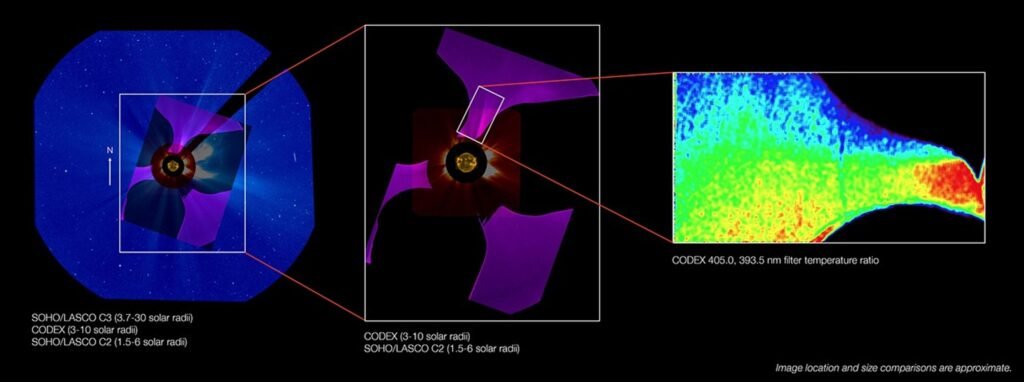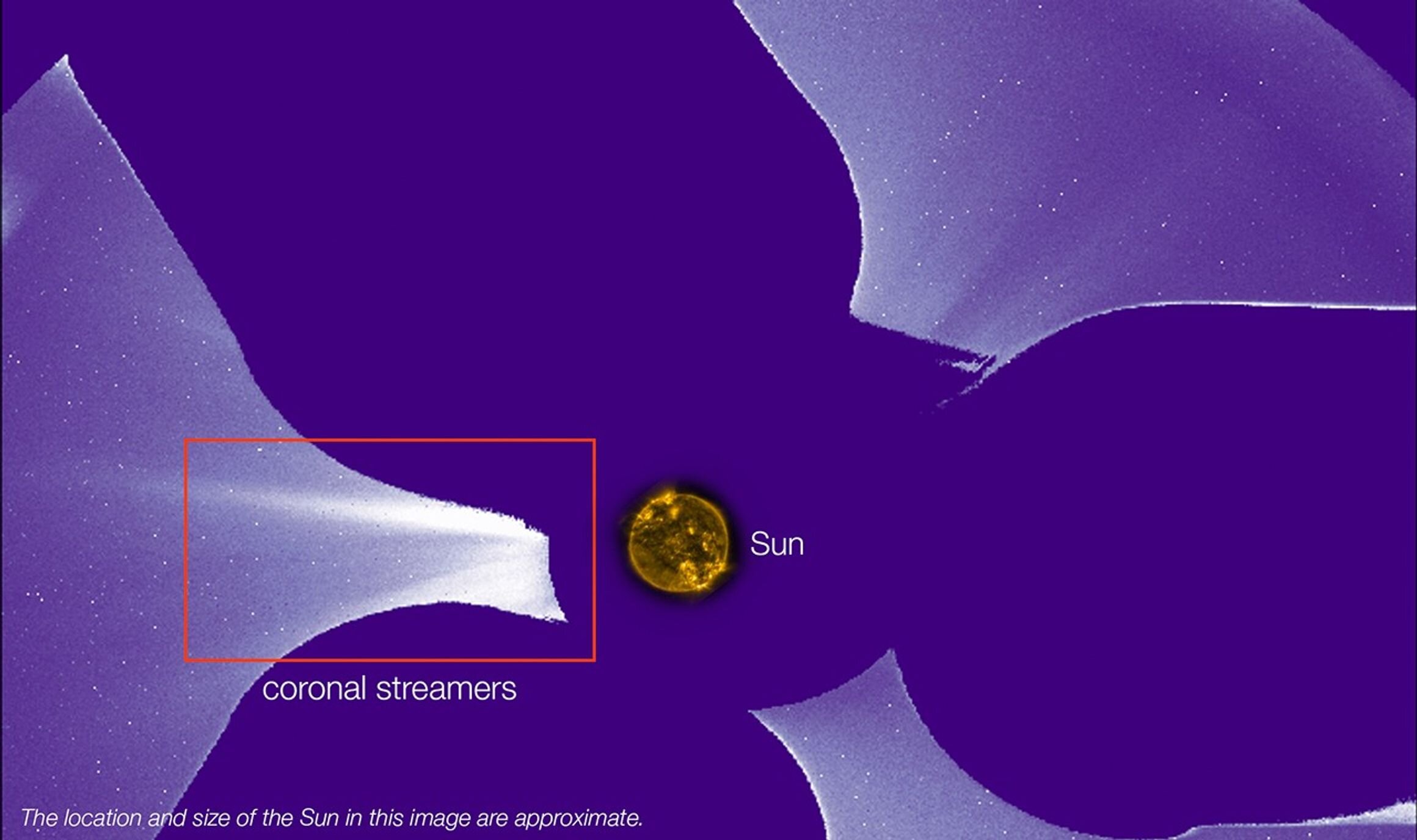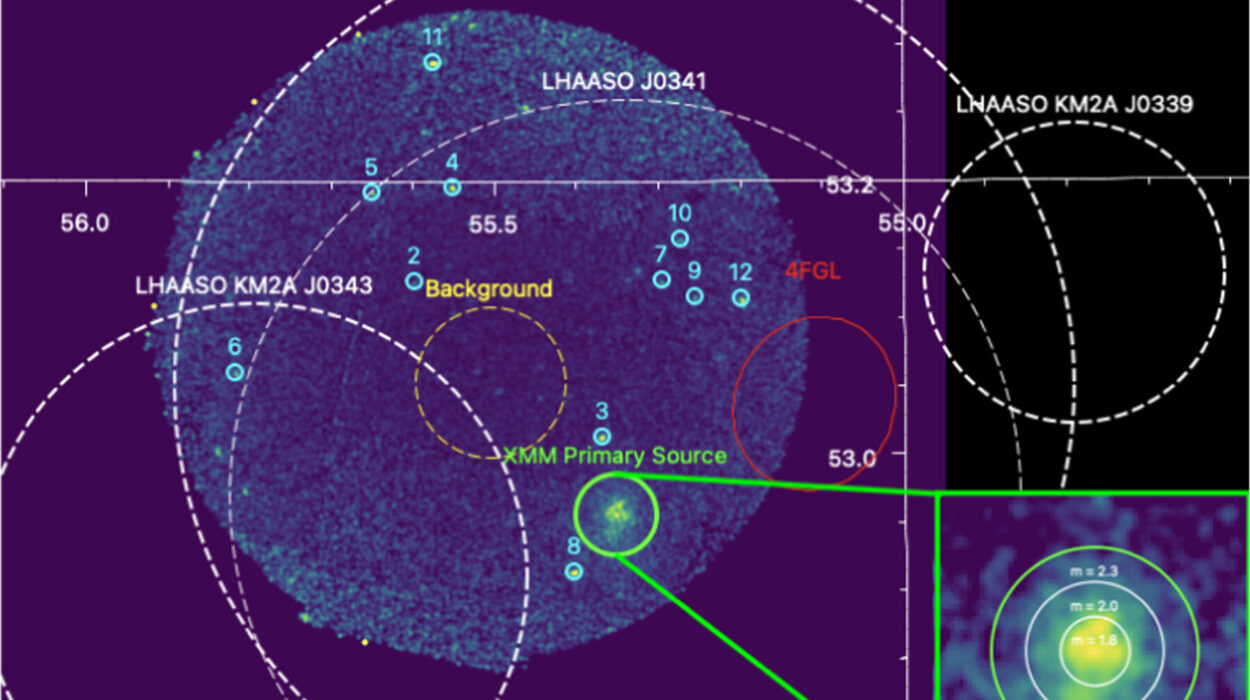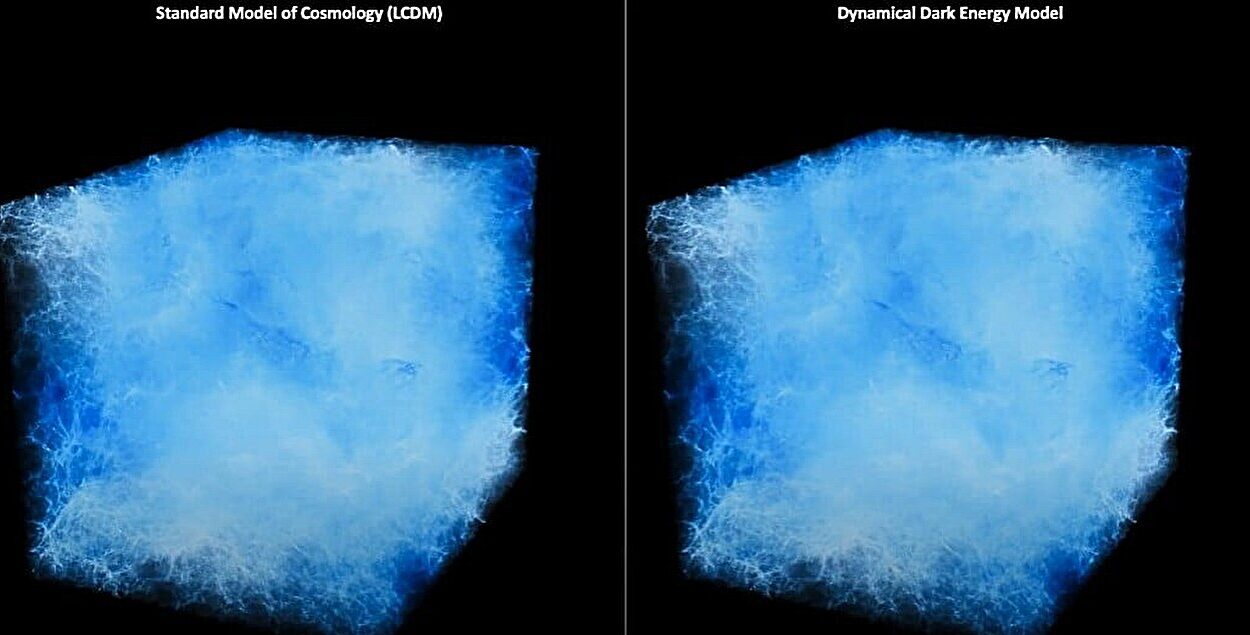High above our planet, orbiting aboard the International Space Station, a sleek new instrument has opened a window into the heart of our solar system’s most powerful force: the Sun. And for the first time, scientists are seeing its outer atmosphere not as a steady stream of heat and light, but as a sputtering, gusting ocean of energy—alive with complexity, motion, and mystery.
NASA’s Coronal Diagnostic Experiment, better known as CODEX, has just delivered its first images. Unveiled at the American Astronomical Society meeting this Tuesday in Anchorage, these extraordinary snapshots mark a watershed moment in solar science. They reveal something no human eye—nor any instrument—has seen before: the temperature and speed of the solar wind as it begins its journey through space.
“We really never had the ability to do this kind of science before,” said Jeffrey Newmark, a heliophysicist at NASA’s Goddard Space Flight Center and principal investigator for the CODEX mission. “The right kind of filters, the right size instrumentation—all the right things fell into place. These are brand new observations that have never been seen before, and we think there’s a lot of really interesting science to be done with it.”
A New Lens on the Sun
At first glance, CODEX might not look like much. Installed on the International Space Station, it’s a solar coronagraph, a specialized telescope designed to block out the sun’s blinding face and reveal its faint, whispering halo—the corona. But CODEX is different. Using a sophisticated set of filters and occulting disks—small, tennis-ball-sized circles held aloft by three metal arms—this new instrument creates artificial eclipses, allowing researchers to observe the solar wind as it escapes the sun in real time.
Unlike previous coronagraphs, which mostly measured how much material was in the corona, CODEX goes deeper. It measures the temperature and speed of the plasma—streams of charged particles—that pour from the sun and bathe the solar system in a constant flow of invisible energy.
What scientists saw surprised them.
Instead of a smooth, uniform outflow of particles, the corona appears chaotic and restless. Pockets of hot plasma surge forward in fits and starts, like gusts of wind breaking through still air. It’s not a gentle breath from the sun—it’s a wild, roaring exhale.
Listening to the Sun’s Silent Symphony
This revelation is not just a curiosity—it’s crucial.
The solar wind—though invisible to us—plays a powerful role in shaping our cosmic environment. It carries energy and magnetic fields across millions of miles. It can disturb satellites, damage electronics aboard spacecraft, and even knock out power grids on Earth during severe solar storms. Understanding where and how this energy is born could one day help scientists predict these space weather events before they strike.

That’s why CODEX matters. With its four finely tuned narrow-band filters—two for measuring temperature and two for speed—CODEX can detect subtle shifts in the brightness of the solar wind across different wavelengths. From these changes, scientists extract detailed information about the plasma’s journey as it leaves the sun’s embrace.
“By comparing the brightness of the images in each of these filters, we can tell the temperature and speed of the coronal solar wind,” said Newmark.
And what they’re finding is reshaping our understanding of one of the most fundamental forces in the solar system.
From the Sun to the Stars—and Back Again
The sun has always been a mystery wrapped in fire. From Earth, we experience it as warmth, light, and life. But beyond the blue sky lies a far more turbulent truth. The corona—the sun’s outermost layer—extends millions of miles into space and reaches temperatures of over a million degrees Celsius, far hotter than the sun’s surface. Why the corona is so intensely hot is still one of solar physics’ biggest unsolved puzzles.
Now, CODEX is helping scientists peer into this fiery riddle.
“The CODEX instrument is doing something new,” Newmark emphasized. “Previous coronagraph experiments have measured the density of material in the corona, but CODEX is measuring the temperature and speed of material in the slowly varying solar wind flowing out from the sun.”
And these are not just measurements—they’re clues.
By characterizing the speed and temperature of the solar wind at its source, CODEX is providing real data points for the computer models used to simulate the sun’s behavior. This makes future predictions more accurate, more detailed, and more useful for protecting both astronauts and technology in space.
“The CODEX instrument will impact space weather modeling by providing constraints for modelers to use in the future,” said Newmark. “We’re excited for what’s to come.”
A Small Instrument With a Big Mission
CODEX’s success is a reminder that sometimes, the most revolutionary breakthroughs come not from massive rockets or billion-dollar missions, but from precision, patience, and perspective.
The instrument, while modest in size, was engineered with surgical care. The occulting disks must be perfectly aligned. The filters must be exquisitely sensitive. The mounting on the International Space Station had to be carefully calculated to avoid interfering with the station’s other functions—and to make the most of its orbital view of the sun.
It’s a triumph of quiet, exacting engineering. But it’s also a triumph of vision.
For decades, scientists dreamed of looking directly at the sun’s elusive breath, tracing its flow from fiery surface to cosmic space. With CODEX, that dream is no longer theoretical. It’s real. And it’s just beginning.
A Brighter Future in Solar Science
As CODEX continues to collect data, scientists will have the opportunity to watch the solar wind evolve over time, observing how solar activity ebbs and flows during the sun’s 11-year cycle. Each new image brings fresh insight—into solar storms, coronal mass ejections, and the invisible threads that tether our planet to its star.
In an age when our technology—and even our climate—is more vulnerable than ever to space weather, tools like CODEX could offer the foresight we need to stay safe, informed, and connected.
It’s a story that begins at the center of our solar system, but it touches every satellite, every GPS signal, and every astronaut who ventures into orbit.
And now, thanks to CODEX, we are finally beginning to understand it in full color.






